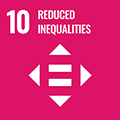Since 2007, the Lundy model of child participation, based on four key concepts (Space, Voice, Audience and Influence), has been used and adopted by national and international organisations, agencies and governments to inform their understanding of children’s participation, generating a sea-change in global understanding of child rights-based participation for both policy and practice.
Research Challenge
PROVIDING AN UNDERSTANDING OF A CHILD'S RIGHT TO BE HEARD
The United Nations Convention on the Rights of the Child (CRC) requires governments to ensure that children’s rights are respected.
Research on the implementation of the CRC was undertaken for the Northern Ireland Commissioner for Children and Young People (NICCY) to inform his priorities for office. The remit was to identify areas where children’s rights were ignored or underplayed. The team conducted interviews with over 1000 children and 350 adult stakeholders.
The NICCY study identified a lack of compliance with Article 12 of the UNCRC (children’s right to have their views given due weight) as one of the cross-cutting issues affecting children in all aspects of their lives, including education. Children and young people consistently reported frustration that their views were not being listened to and taken seriously. One of the factors which appeared to hinder the full realisation of the right was the fact that the precise nature of Article 12 was not fully understood by CRC duty-bearers.
Our Approach
SPACE, VOICE, AUDIENCE, INFLUENCE
Article 12 is often described under the banner of 'the voice of the child', ‘pupil voice’ or 'the right to be heard', but these can misrepresent and indeed undermine the rights of children and young people. In view of this, Professor Laura Lundy, drawing on the research for NICCY, proposed a model for rights-compliant children’s participation which offers a legally sound but practical conceptualisation of Article 12 of the CRC. This model suggests that implementation of Article 12 requires consideration of four inter-related concepts:
- SPACE: Children must be given the opportunity to express a view
- VOICE: Children must be facilitated to express their views
- AUDIENCE: The view must be listened to.
- INFLUENCE: The view must be acted upon, as appropriate.
‘It is impossible to overstate the impact of the Lundy model. It has changed the global understanding of child participation.’
- Chairperson of the European Network of Ombudsmen and Commissioners for Children
What impact did it make?
IMPROVING THE LIVES OF CHILDREN ACROSS THE WORLD
The Lundy model has been used to transform the ways in which the views and experiences of children across the world are heard at the United Nations.
Its promotion, adoption and implementation have contributed directly to ensuring that the United Nations, governments and national and international organisations involve children, right across the world, meaningfully in the decisions that affect their lives.
Professor Laura Lundy has collaborated with international organisations (the United Nations, European Commission, Council of Europe), international NGOs (Child Rights Connect, UNICEF, World Vision, Save the Children, EPCAT, Terre des Hommes), national governments and agencies (in Ireland, Iceland, Denmark, Malta, Taiwan, Belgium, Scotland, Iceland, New Zealand) and scores of other individual agencies and NGOs across the globe to adapt and apply the Lundy model in social and geographical contexts, with the consequence that millions of children have been heard and taken seriously in the decisions that affect their lives, including through their participation in policy development. These global organisations use the Lundy model to plan and evaluate child participation, including for the most vulnerable and marginalised children, in every region of the world.
Our impact
Impact related to the UN Sustainable Development Goals
Learn more about Queen’s University’s commitment to nurturing a culture of sustainability and achieving the Sustainable Development Goals (SDGs) through research and education.




